Bust of a young boy
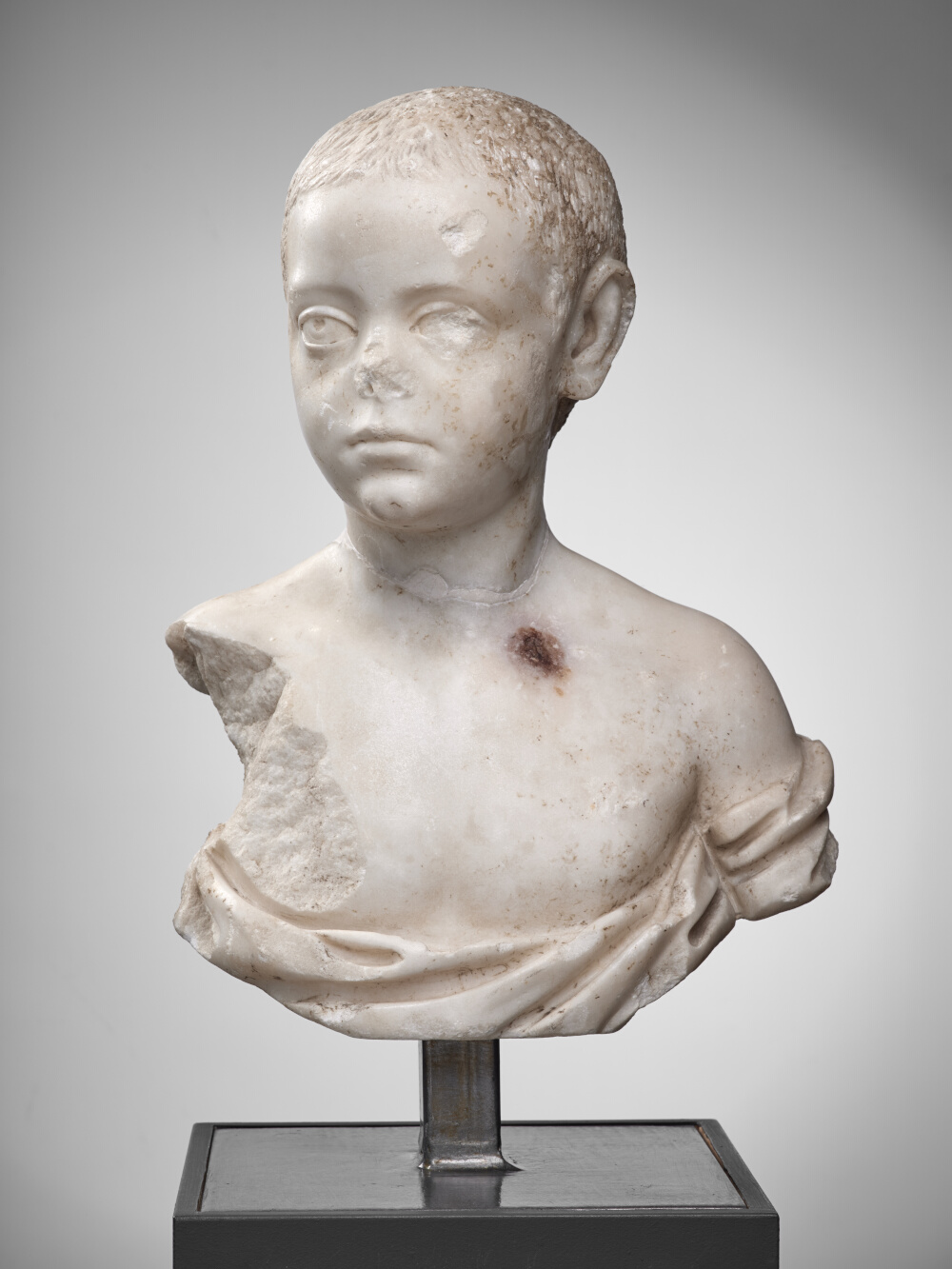
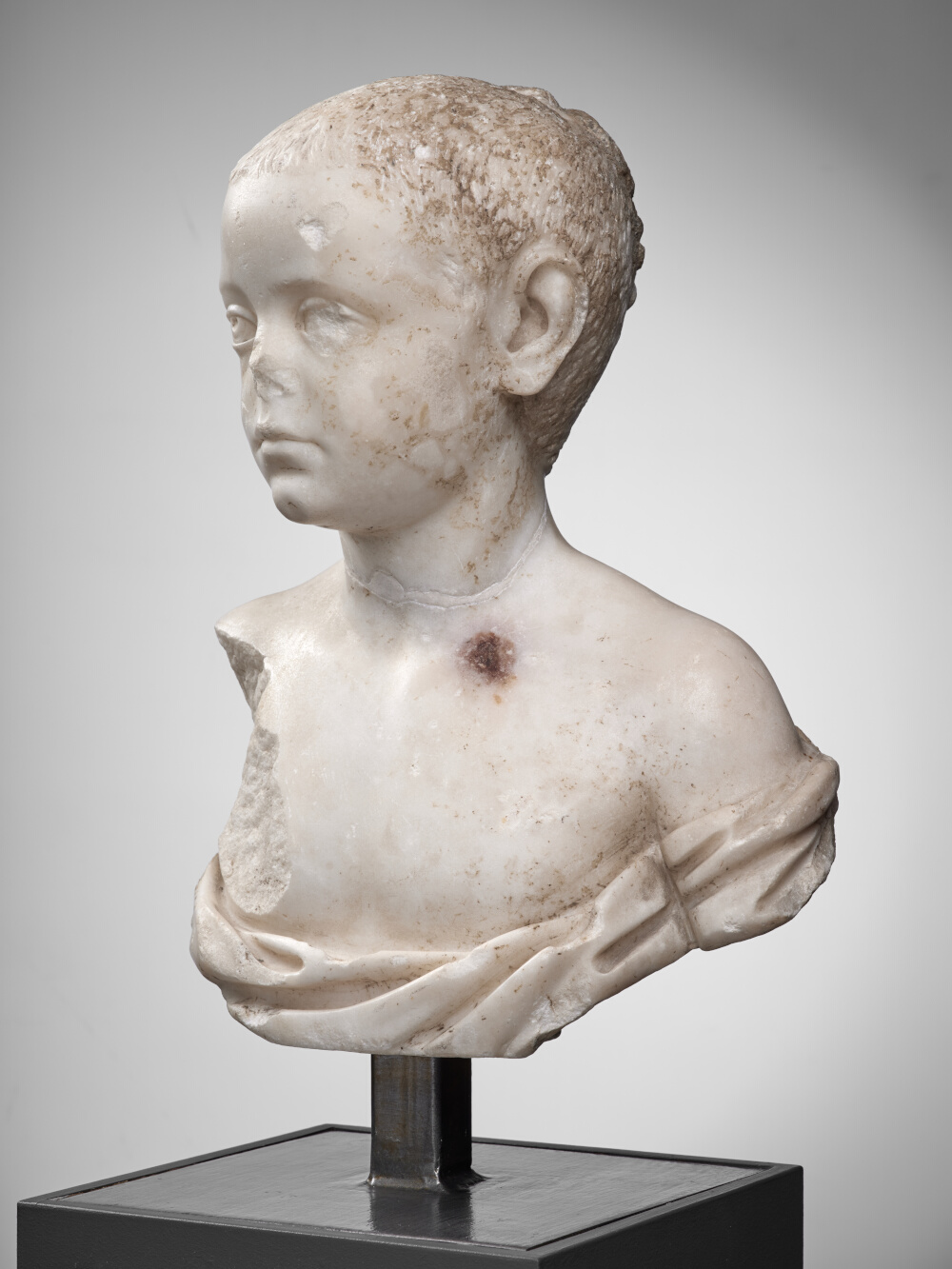
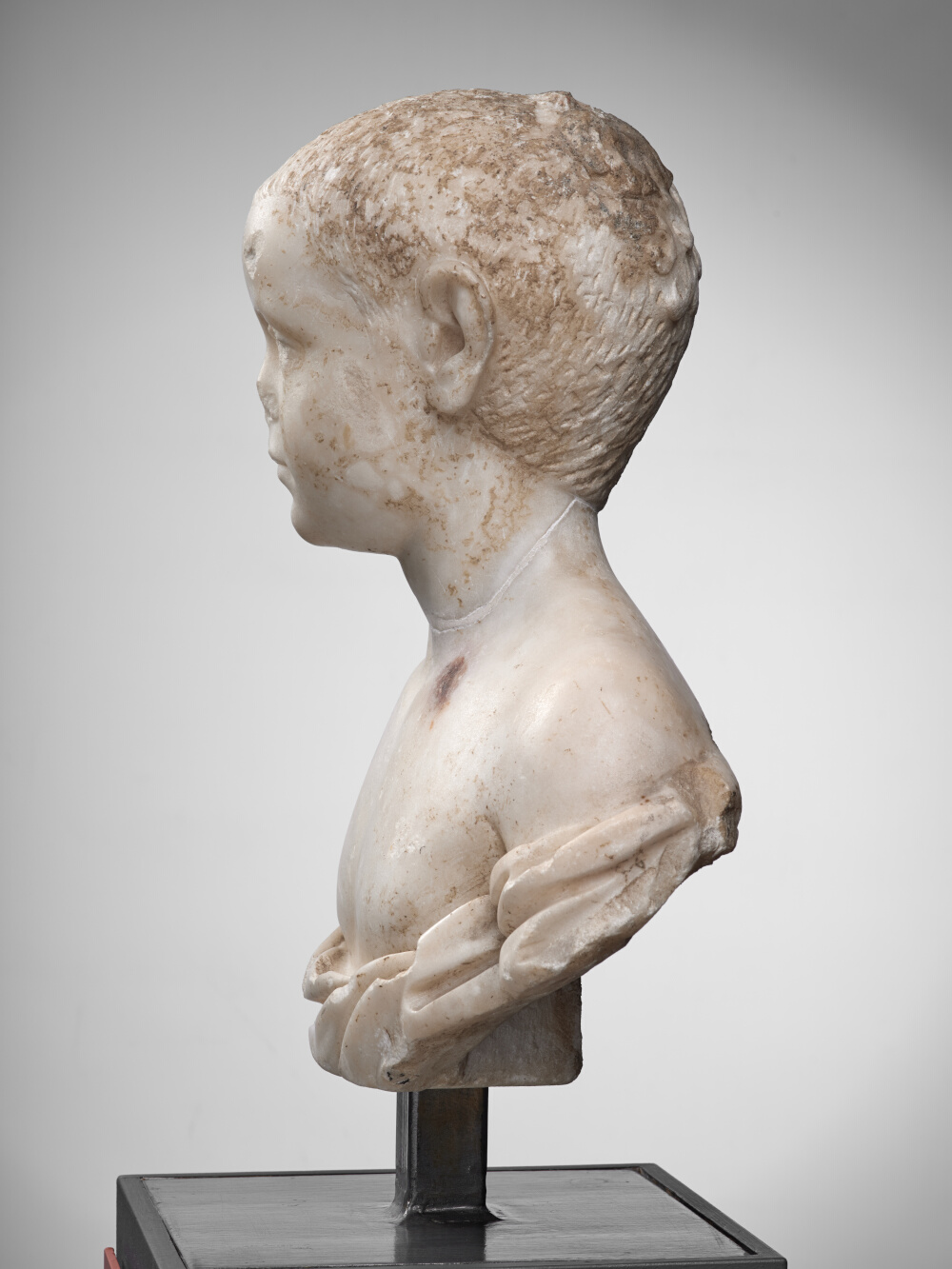
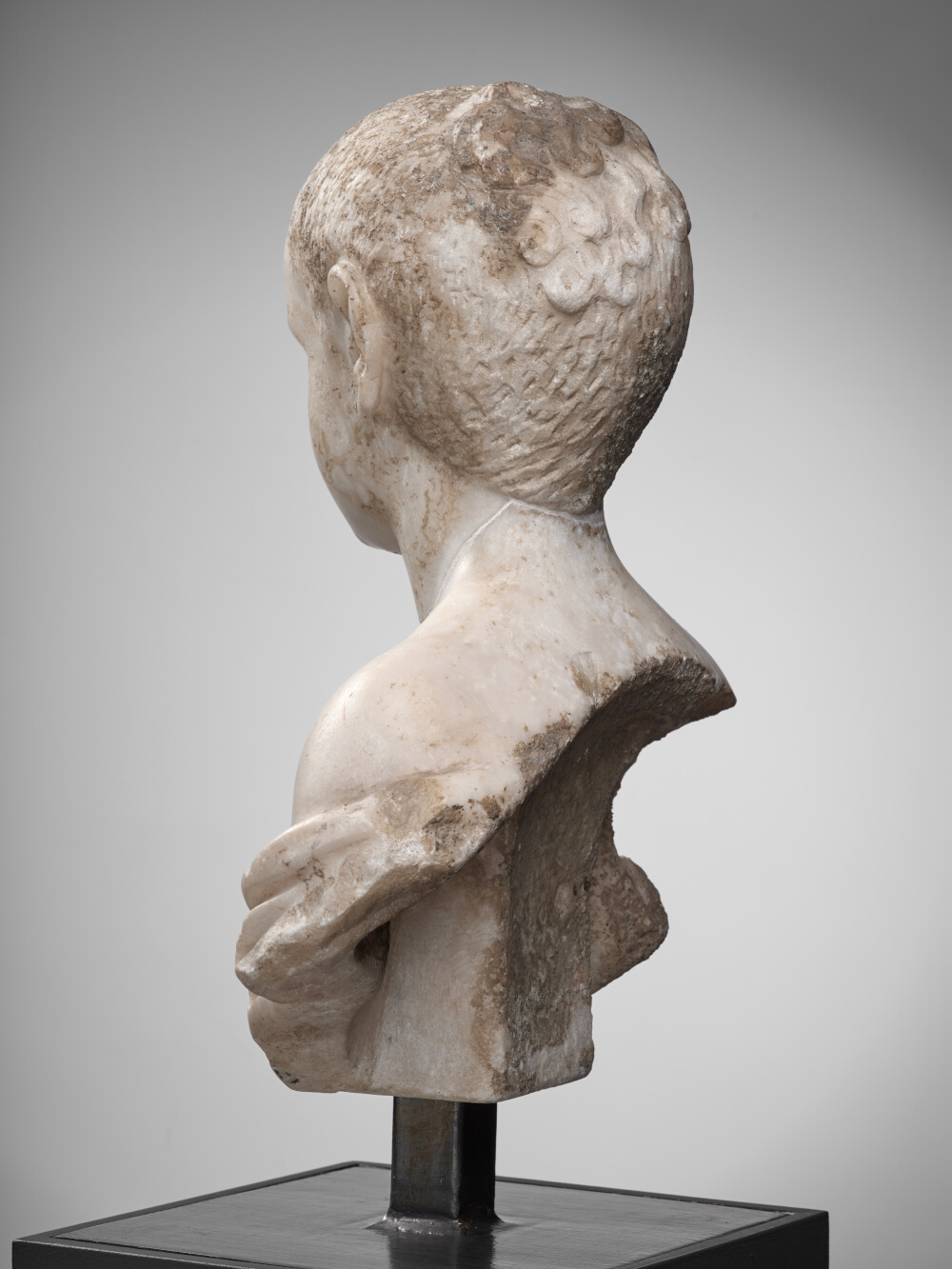
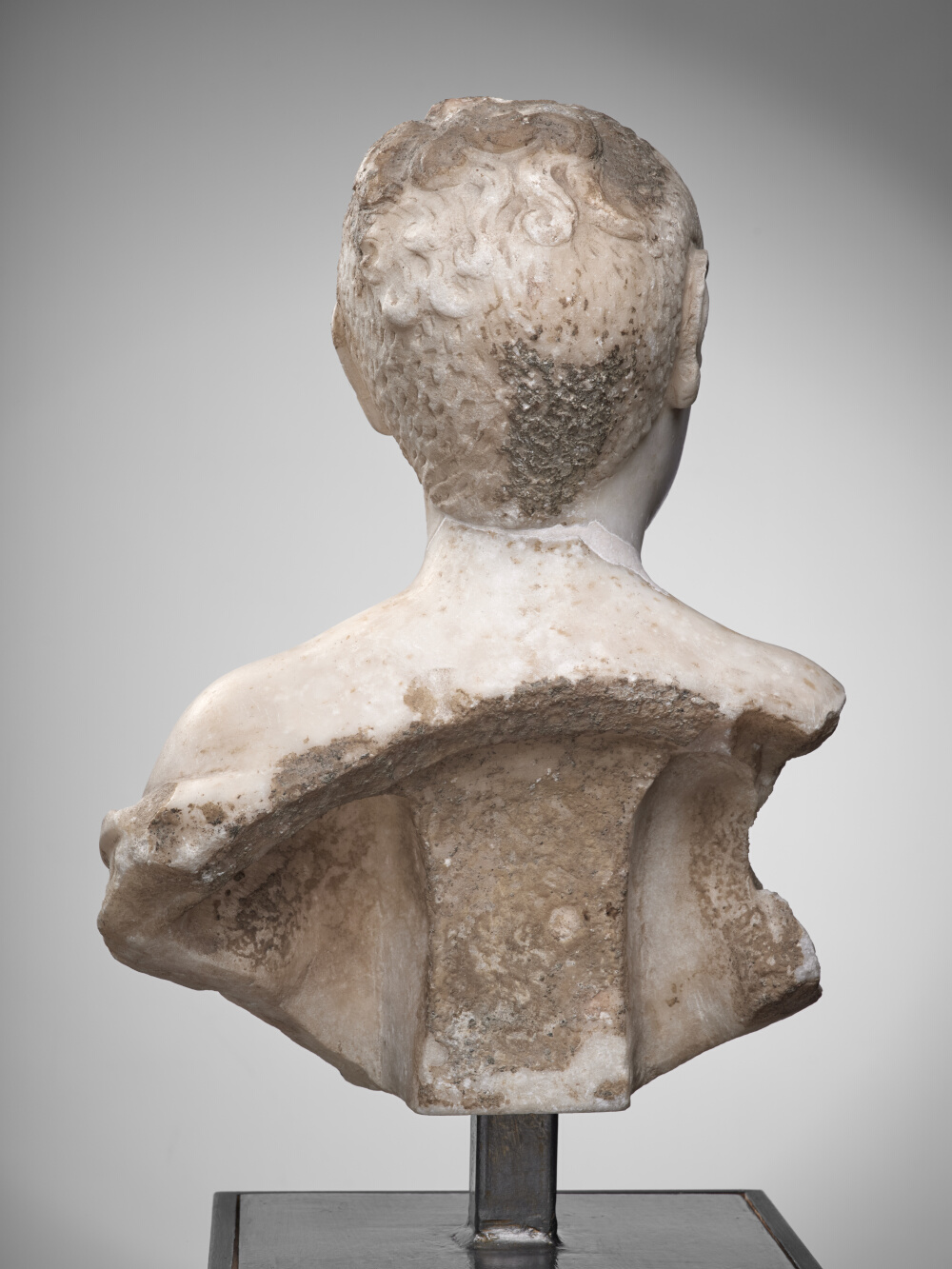
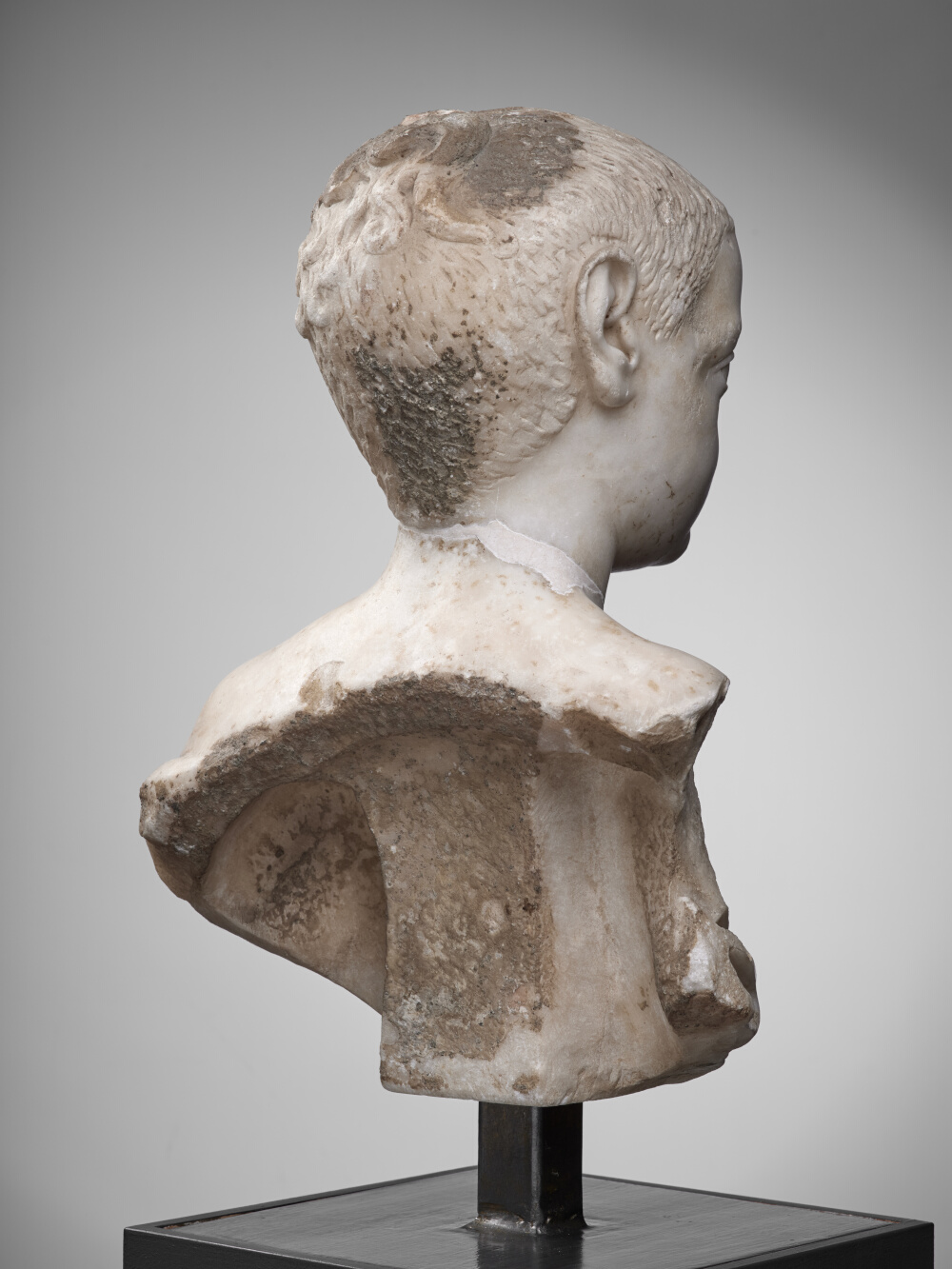
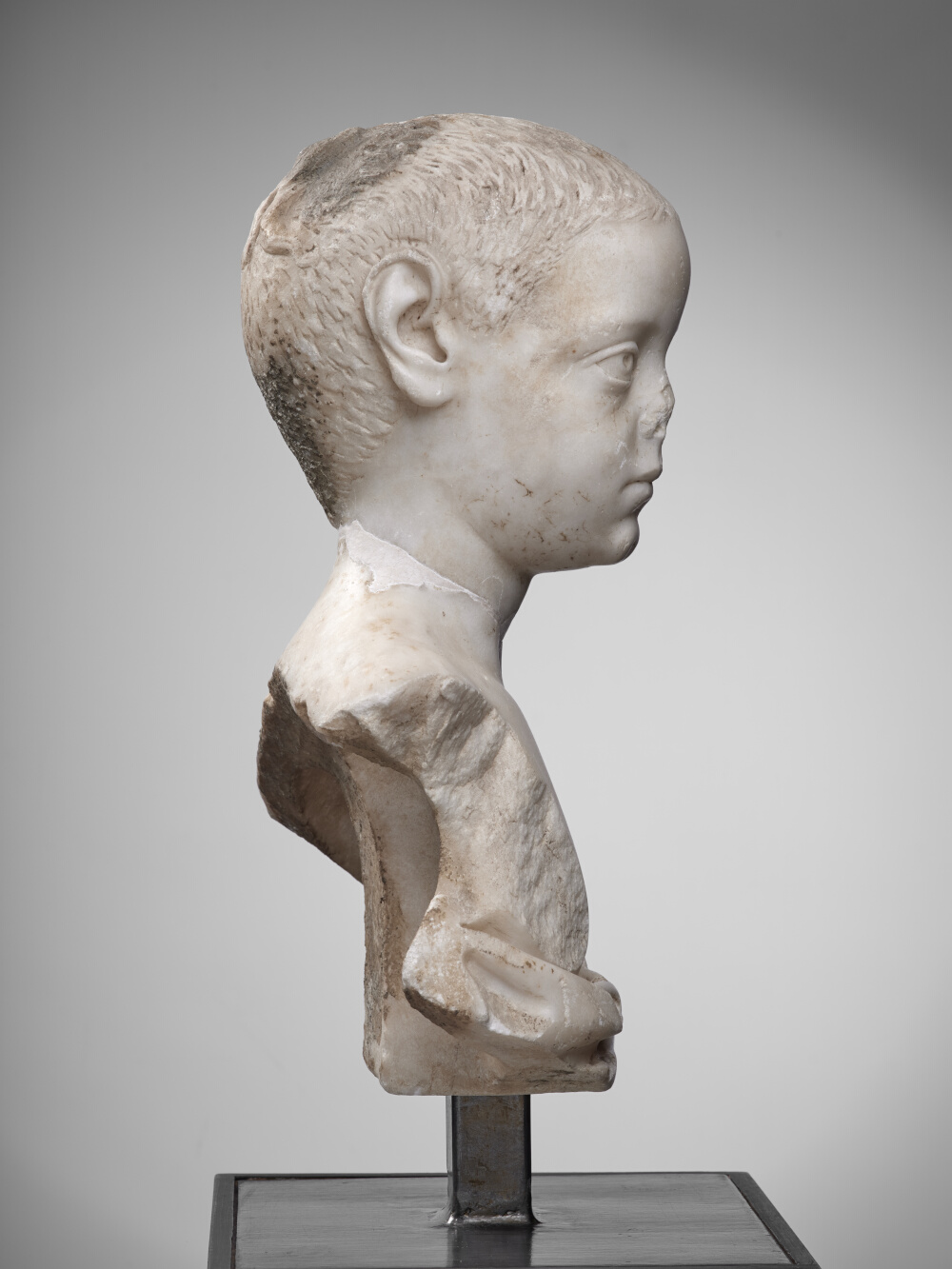
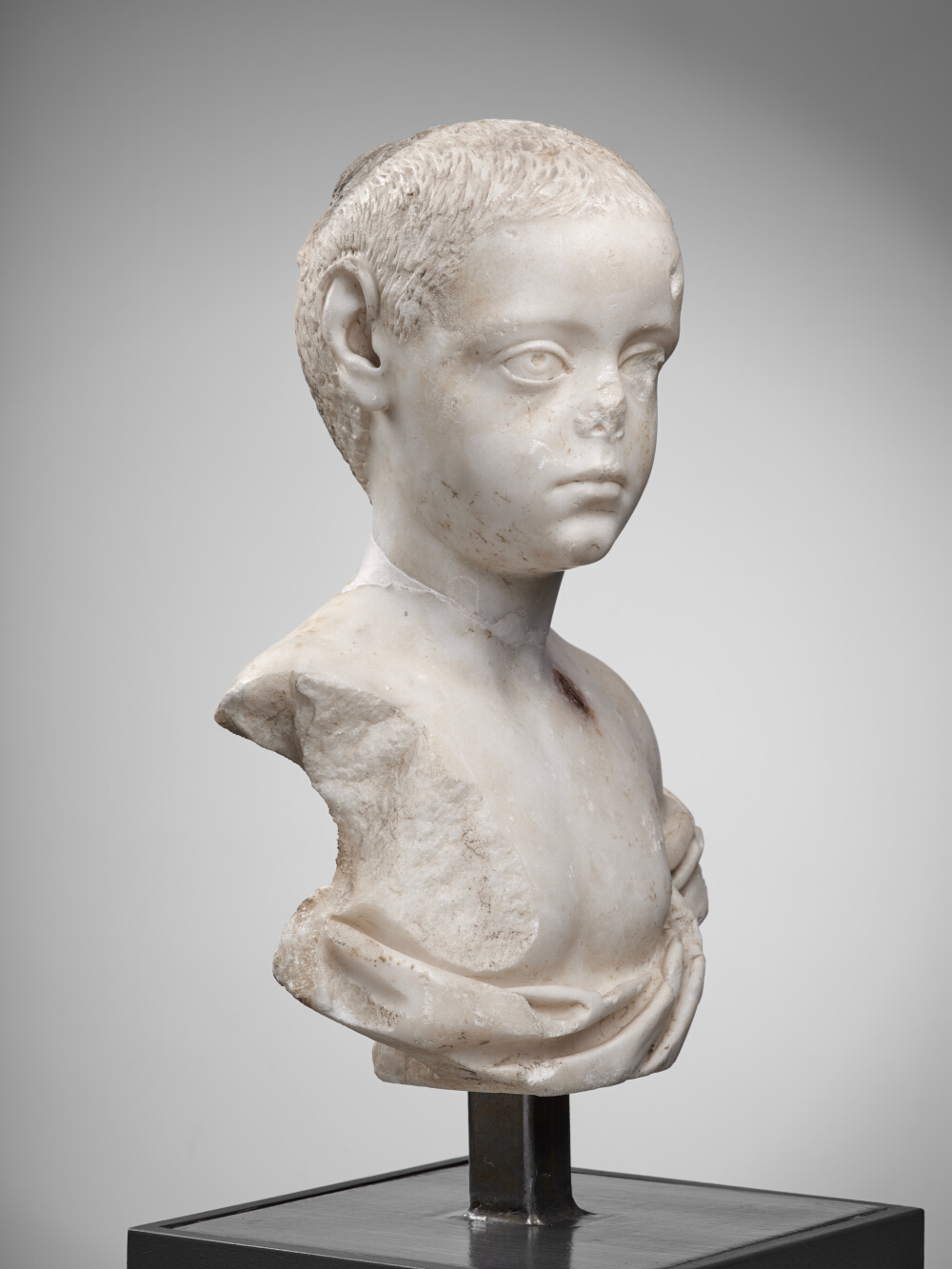
- Date de création
- Second third of the 3\rd\ century
- Material
- Dokimium marble (Turkey)
- Dimensions
- H. 36,5 x l. 25 x P. 17 (cm)
- Inventory number
- Ra 125
- Photo credits
- Daniel Martin
According to the 2nd century rhetorician Julius Pollux from Naucratis, some parts of children’s hair were left to grow, and later offered to the god under whose protection the child had been placed. This offering was meant to protect them from the risks inherent to infancy Pollux grammaticus, Onomasticon, 2nd century, II, 30.. The intriguing locks of hair at the back of the skull of this bust, whose hair is otherwise cut very short, has been seen as a possible indication that this child was himself entrusted to the protection of a divinity. The Egyptian goddess Isis inevitably comes to mind by assimilation, as these long curls are reminiscent of a capillary practice known as « Horus lock ».
This practice, inherited from Ancient Egypt, was maintained during the Roman imperial period as shown by iconography, and during the 3rd century in particular. As for the long locks left uncut at the back of this skull, which are seen as distinctive proof that the child’s wellbeing had been entrusted to Isis, they are present on no more than fourteen children’s portraits H.R. Goette, « Römische Kinderbildnisse mit Jugend-Locken, » Mitteilungen des Deutschen Archäologischen Instituts. Athenische Abteilung, 104, 1989, pp. 203–217, en partic. p. 208.. That is very few when compared to the young individuals shown sporting a « Horus lock » which is more in keeping with tradition, in other words worn in the form of a sidelock, on the right-hand side of the head (and more rarely on the left side) that falls onto the shoulder. Whereas in Ancient Egypt it was a marker of one’s social position and status, in the Roman world it may simply have been a direct reference to Isis A. Backe-Dahmen, « Roman Children and the \guillemotleft Horus Lock \guillemotright between Cult and Image, » V. Gasparini, R. Veymiers (eds.), Individuals and Materials in the Greco-Roman Cults of Isis. Agents, Images, and Practices. Religions in the Graeco-Roman World, Leiden-Boston, 2018, pp. 509–538, p. 538..
Although these Nilotic deities were certainly present in Chiragan in the form of large statues, this does not prove the consecration of this child by the great goddess of the Nile Delta. The child’s hairstyle may simply mean that the child was essentially frail, and was therefore placed under the protection of the goddess as a way of guaranteeing his good health and posterity.
P. Capus
Bibliography
- Baratte 1993 F. Baratte, « Deux portraits d’enfants isiaques, » Revue Archéologique, 1, pp. 101–110. fasc. 1, p. 101-110
- Cazes et al. 1999 D. Cazes, E. Ugaglia, V. Geneviève, L. Mouysset, J.-C. Arramond, Q. Cazes, Le Musée Saint-Raymond : musée des Antiques de Toulouse, Toulouse-Paris. p. 141
- Derriks 1998 C. Derriks, « Une tête d’enfant isiaque. Hypothèse ou certitude, » W. Clarysse, A. Schoors, H. Willems (eds.), Egyptian religion, the last thousand years : studies dedicated to the Memory of Jan Quagebeur I, Leuven, pp. 91–103. p. 91-103
- Espérandieu 1908 É. Espérandieu, Recueil général des bas-reliefs de la Gaule romaine, 2. Aquitaine, Paris.
- Goette 1989 H.R. Goette, « Römische Kinderbildnisse mit Jugend-Locken, » Mitteilungen des Deutschen Archäologischen Instituts. Athenische Abteilung, 104, pp. 203–217. p. 203-217
- Joulin 1901 L. Joulin, Les établissements gallo-romains de la plaine de Martres-Tolosane, Paris. p. 336, pl. XVIII, no 272 D
- Rachou 1912 H. Rachou, Catalogue des collections de sculpture et d’épigraphie du musée de Toulouse, Toulouse. no 125
- Vonderstein 2011 M. Vonderstein, « Cirrus, mallos oder Horuslocke-Uberlegungen zu einem romischen Knabenportrat in der Berliner Antikensammlun, » O. Pilz (ed.), "Keraunia": Beiträge zu Mythos, Kult und Heiligtum in der Antike, Berlin, Boston, pp. 161–176. p. 161-176
- von Gonzenbach 1957 V. von Gonzenbach, Untersuchungen zu den Knabenweihen im Isiskult der römischen Kaiserzeit, Bonn.
- Backe-Dahmen 2008 A. Backe-Dahmen, Die Welt der Kinder in der Antike, Mainz.
- Musée Saint-Raymond 1995 Musée Saint-Raymond, Le regard de Rome : portraits romains des musées de Mérida, Toulouse et Tarragona. Exhibition, Mérida, Museo nacional de arte romano ; Toulouse, Musée Saint-Raymond ; Tarragone, Museu nacional arqueològic de Tarragona, 1995, Toulouse. p. 53, no 13
To cite this notice
Capus P., "Bust of a young boy", in The sculptures of the roman villa of Chiragan, Toulouse, 2019, online <https://villachiragan.saintraymond.toulouse.fr/en/ark:/87276/a_ra_125>.